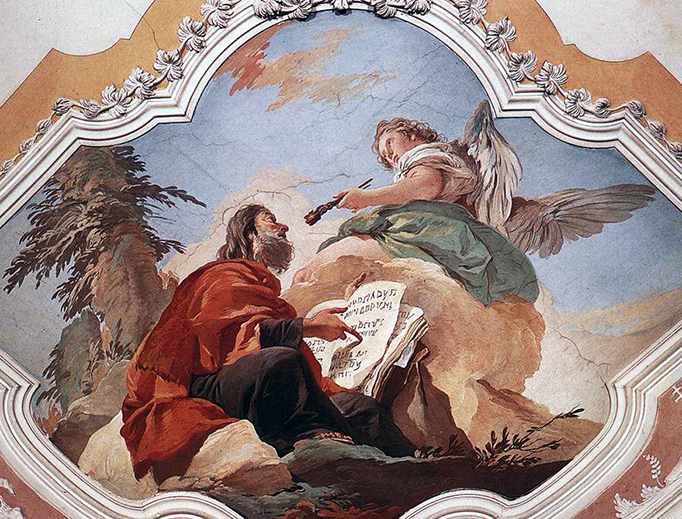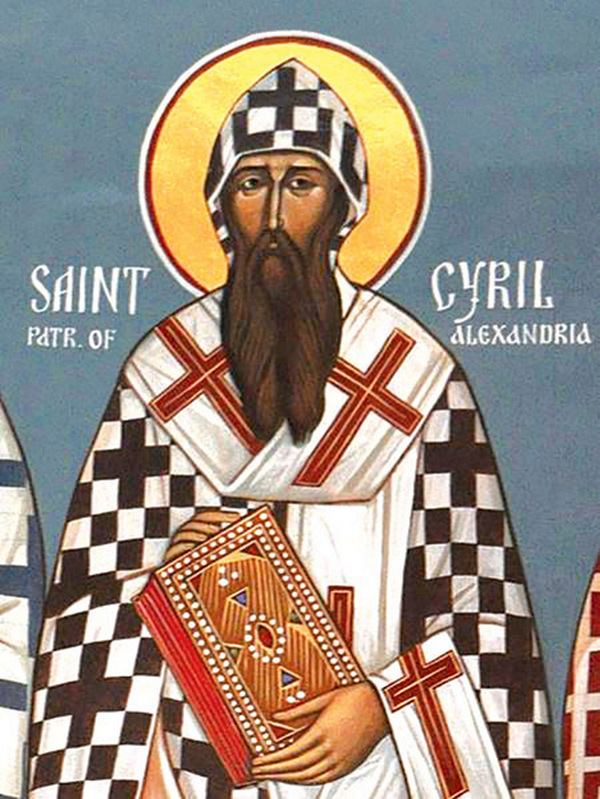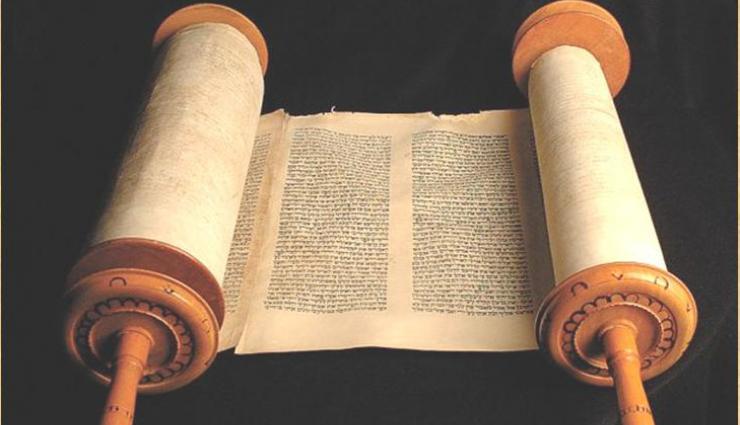According to Christian theologians, about fifteen Jewish prophets from the 15th century BC. e. predicted the emergence from the midst of the Jewish people of a certain person who is the Son of God and His living embodiment. This was most clearly heard from the mouth of the prophet Isaiah, born about 765 BC. e. in Jerusalem. What is known about him and what is hidden by the veil of past centuries?
The beginning of a great ministry
It is generally accepted that Isaiah began his prophecies at the age of twenty, that is, in 744 BC. e., when in Judea ruled King Azariah. The impetus for the beginning of the great ministry was the vision revealed by Isaiah within the walls of the Jerusalem Temple. According to him, he was honored to behold the Lord God Himself, sitting on the Throne surrounded by the Heavenly Forces, who constantly glorified Him. On top of the miracle, one of the seraphim touched the mouth of the prophet with burning coal taken from the altar, and thereby cleansed of sin and lawlessness.
According to the evidence contained in the Old Testament and its Jewish version - the Torah, Jews often retreated from the commandments of God, and then innumerable troubles fell upon them - invasions of foreigners, epidemics, drought, etc. One of such difficult periods was observed in the VIII century before n e., when the people came to an extreme degree of impoverishment and was on the verge of despair. It was then that the Lord sent His prophet Isaiah to them, who for sixty years tirelessly testified of the coming of the Savior into the world, who would deliver people from the bonds of original sin and open the gates of eternal life to them.
Book II of the Prophets contains information that the ministry of God's messenger lasted until 684 and ended in martyrdom: on the orders of the wicked King Ochazia, he was placed between the cedar boards and then split in two by a wooden saw.
Old Testament Evangelist
Isaiah set forth his prophecies in such a clear and precise form that later they began to call him the Old Testament evangelist. Events that have yet to be accomplished in a few centuries, the author describes as if they had already happened, and he was their living witness. To verify this, it is enough to turn to the predictions given to them about the birth of the Savior from the Blessed Virgin and about His subsequent sufferings to atone for human sins.
The prophecies of Isaiah about the Messiah, whose arrival in the world is described with amazing accuracy and an abundance of details, are of undoubted interest. Mention is made, in particular, of his belonging to the family of King David. This documentary presentation of upcoming events in all centuries led theologians to the idea that the Lord God himself was the true inspirer of the creation of texts, who wished in this way to proclaim to the Jews and all the people who inhabited the earth their future.
The structure and dating of the book of prophecies
The structure of the Old Testament includes the “Book of Isaiah the Prophet”, which contains the texts of separate speeches of this outstanding religious figure before a wide Jewish audience. Many of them have a specific dating, which allows researchers to establish the chronological boundaries of the period of his public ministry, carried out between 733 and 701 BC. e. The same historical document is set forth in the Tanakh, the Hebrew version of the Holy Scriptures, and is placed there in the 12th book from the section “Neviim” (Prophets).
Both in the Old Testament and in the Tanach, all the texts cited are not united in the chronological order of their creation, but in a semantic one, which makes it possible to more easily trace the development of the author’s thoughts. Thus, the first part of Isaiah's prophecies is in the nature of accusatory speeches in which the author reproaches his contemporaries for trampling the Commandments given by the Lord to Moses on Mount Sinai and predicts inevitable retribution for them. Chapters 1 through 39 are devoted to this topic. This is followed by a section (chapters 40-66), in which the author cites consolation regarding the coming Babylonian captivity (597-539). It also contains the prophecies of Isaiah about the last times and the appearance of the Messiah in the world. All narration is conducted in a lively and accessible manner.
A look into the future
In the 40th chapter of the book containing Isaiah's prophecies, it is stated that the appearance of the Savior in the world will be preceded by the birth of His Forerunner, who, by calling people to repent of their sins, will prepare for him the path of messianic service. The prophet also noted such a detail as the utter asceticism of the life of God's messenger, who spent his days in the wilderness and raised his voice from there.

Isaiah does not find a rational explanation for the prophecy of the birth of Christ, which occurred almost seven and a half centuries after his death. The 7th chapter of the book mentioned above tells how the earthly Virgin “receives in the womb” of the Holy Spirit, and in such a supernatural way the immaculate conception of Her Son will be accomplished, which will be given the name Immanuel, which means “God is with us” in Hebrew . The Prophet announced that the Messiah sent to the world would have in Himself the fullness of the gifts of the Holy Spirit: reason, wisdom, strength, knowledge, the fear of God and piety.
Prince of peace
In addition, the prophecies of Isaiah about the Messiah give names that his people will call him. Among them are: Prince of Peace, Father of Eternity, Mighty God, Wonderful and a number of others. He did not fail to mention that the Son of God would combine humility and meekness in Himself with the greatest spiritual power that would enable Him to build His Kingdom on earth. However, for this, He will voluntarily undergo humiliation, torment, and death itself, in order to later be resurrected and give eternal life to all who, having cleansed their souls by repentance, step under the shadow of the Church founded by Him.
Interpreter of biblical prophecies
Everything said by the prophet and set forth on the pages of his book corresponds with amazing accuracy to the descriptions of events given by the evangelists who were contemporaries of Jesus Christ and who became their living witnesses. In subsequent historical periods, many prominent theologians compiled their interpretations of Isaiah's prophecies. Among them are the most famous works of the Egyptian religious leader of the late IV and early V century Cyril of Alexandria. This prominent interpreter of biblical texts (exegetes) called Isaiah not only a prophet, but also the first apostle of Jesus Christ, several centuries ahead of all other preachers of his holy doctrine.

He emphasizes the final part of the book of Isaiah's prophecies about the Messiah, which refers to the Second Coming of the Lord. In particular, Cyril of Alexandria attaches literal significance to the words of Jesus that, having appeared in the world, He will gather around Him all languages (peoples), which, appearing at the call, will see His greatness and glory.
Protestant Approach to Prophecy Texts
It should be noted that among representatives of liberal - mainly Protestant - Theosophy, there is an opinion that the authorship of the Book of the Prophet Isaiah belongs to three different religious figures who remained anonymous and lived in different historical eras. Accordingly, the entire text of the document is conditionally divided into three separate parts. They call the originator of the first of them, covering chapters 1 through 39, Pervo-Isaiah, sometimes, however, allowing the use of his common name. The author of the next part, which includes the volume of material from chapter 40 to 55, is referred to by them as Second Isaiah. He is often called Deuteroisiah or the Second Yeshayah, which is completely identical. And finally, the final part of the book is attributed to a certain Third Isaiah or Tritoisaye.
We emphasize that this approach to the book, which contains Isaiah's prophecies about the Messiah, is characteristic only of representatives of some Protestant directions of Christianity, while theological science as a whole recognizes the authorship of only one person, whose religious activity dates back to the 8th century BC. e.
Apocrypha entitled Prophet
In addition, one cannot ignore several texts, united under the general title “Ascension of Isaiah” and widely used in the Middle Ages. All of them are apocrypha, that is, scriptures that have not received recognition from the official Church, and therefore are heretical in content. They also contain the Messianic prophecies of Isaiah, but in a wording significantly different from the gospel interpretation of events.
According to researchers, this literary monument was created in the Balkans by participants in the anti-clerical movement of the Bogomils that originated there in the 10th century. Over the next five centuries, his text was repeatedly copied and dispersed throughout the Christian world, until it was officially banned by the pope, and his distributors were not persecuted. Of the 11 chapters that once belonged to it, only 6 have survived to this day.
Other Messianic Predictions
At the end of the article, we note that Isaiah's prophecies about the Savior are far from the only one contained in the pages of the Holy Scripture, a prediction of the appearance of the Son of God into the world. The same good news can be found in a number of Old Testament texts, it is enough to carefully study the “Pentateuch of Moses”, the parables of King Solomon, as well as the “Book of Psalms”. Leading Christian theologians claim that, directly or indirectly, they contain information about events that happened during the time of Jesus Christ and are reflected in the texts of the four canonical Gospels.

However, in none of them the picture of the future is reproduced so vividly and convincingly as in a book composed of the speeches of the Jewish prophet Isaiah. It is for this reason that he is given a special place among all God's chosen ones, overshadowed by the grace of the Holy Spirit and who have been able to see what is hidden from other people in the thickness of the centuries to come.
Afterword
By the time of the birth of Jesus Christ, the Jewish tradition of discerning specific prophecies in the texts of the Tanach had been going on for several centuries. A certain idea was developed both about the personality of the coming Messiah, and about the goals of His coming. However, despite the fact that, according to evangelists, many Jews believed in the Son of God, the majority of Jews to this day do not recognize Jesus Christ as the Messiah and continue to wait for the fulfillment of the prophecies related to His coming into the world.